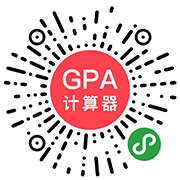托福考试阅读题的重要性无需解释大家一定都明白。下面天道小编就给大家带来一个关于管理学的托福阅读模拟题,大家可以模拟测试一下,最后将公布参考答案。
Although management principles have been implemented since ancient times, most management scholars trace the beginning of modern management thought back to the early 1900s, beginning with the pioneering work of Frederick Taylor (1856-1915). Taylor was the first person to study work scientifically. He is most famous for introducing techniques of time and motion study, differential piece rate systems, and for systematically specializing the work of operating employees and managers. Along with other pioneers such as Frank and Lillian Gilbreth, Taylor set the stage, labeling his philosophy and methods “scientific management’. At that time, his philosophy, which was concerned with productivity, but which was often misinterpreted as promoting worker interests at the expense of management, was in marked contrast to the prevailing industrial norms of worker exploitation.
The time and motion study concepts were popularized by Frank and Lillian Gilbreth. The Gilbreths had 12 children. By analyzing his children’s dishwashing and bedmaking chores, this pioneer efficiency expert, Frank Gilbreth, hit on principles whereby workers could eliminate waste motion. He was memorialized by two of his children in their 1949 book called “Cheaper by the Dozen”.
The Gilbreth methods included using stop watches to time worker movements and special tools (cameras and special clocks) to monitor and study worker performance, and also involved identification of “therbligs” (Gilbreth spelled backwards) – basic motions used in production jobs. Many of these motions and accompanying times have been used to determine how long it should take a skilled worker to perform a given job. In this way an industrial engineer can get a handle on the approximate time it should take to produce a product or provide a service. However, use of work analysis in this way is unlikely to lead to useful results unless all five work dimensions are considered: physical, psychological, social, cultural, and power.
1. What is the passage primarily about?
(a) The limitations of pioneering studies in understanding human behavior
(b) How time and motion studies were first developed
(c) The first applications of a scientific approach to understanding human behavior
(d) The beginnings of modern management theory
2. The word “ which” in line 9 refers to
(a) scientific management
(b) philosophy
(c) productivity
(d) time and motion study
3. It can be inferred from the first paragraph that
(a) workers welcomed the application of scientific management
(b) Talor’s philosophy is different from the industrial norms
(c) by the early 1900s science had reached a stage where it could be applied to the workplace
(d) workers were no longer exploited after the introduction of scientific management.
4. The word “prevailing” in line 10 is closest in meaning to
(a) predominant
(b) broadly accepted
(c) prevalent
(d) common
5. According to the passage, Frank Gilbreth discovered how workers could eliminate waste motion by
(a) using special tools such as cameras and clocks
(b) using stop watches
(c) applying scientific management principles
(d) watching his children do their chores
6. The basic motions used in production jobs were given which one of following names by Frank Gilbreth?
(a) dimensions
(b) gilreths
(c) therbligs
(d) monitors
7. According to the passage, the time it takes a skilled worker to perform the motion of a given job can be measured by using:
(a) stop watches
(b) all 5 work dimensions
(c) special tools
(d) therbligs
8. The word “motions” in line 20 is closest in meaning to
(a) stop watches
(b) habits
(c) actions
(d) special tools
9. Where in the passage does the author comment that the principles of scientificmanagement were often misunderstood?
(a) Lines 1-5
(b) Lines 6-10
(c) Lines 11-15
(d) Lines 16-20
10. The word “ dimensions” in line 24 is closest in meaning to
(a) sizes
(a) extents
(b) aspects
(c) standards
11. All of the following are true except
(a) scientific management was concerned with productivity.
(b) the beginnings of modern management thought commenced in the 19th century.
(c) Frank Gilbreth’s fame was enhanced by two of his children writing a book.
(d) analyzing work to increase productivity is not likely to be useful unless all of the dimensions are considered.
参考答案:1.d 2.b 3.b 4.a 5.d 6.c 7.d 8.c 9.b 10.c 11.b
希望上面这道新托福阅读模拟题能给大家带来一些帮助。









 大马U.S.News排名
大马U.S.News排名 2022大马QS排名
2022大马QS排名 马来西亚QS亚洲排名
马来西亚QS亚洲排名 高考后留学美国
高考后留学美国






 香港大学
香港大学 香港中文大学
香港中文大学 香港科技大学
香港科技大学 香港理工大学
香港理工大学 香港城市大学
香港城市大学 香港浸会大学
香港浸会大学

